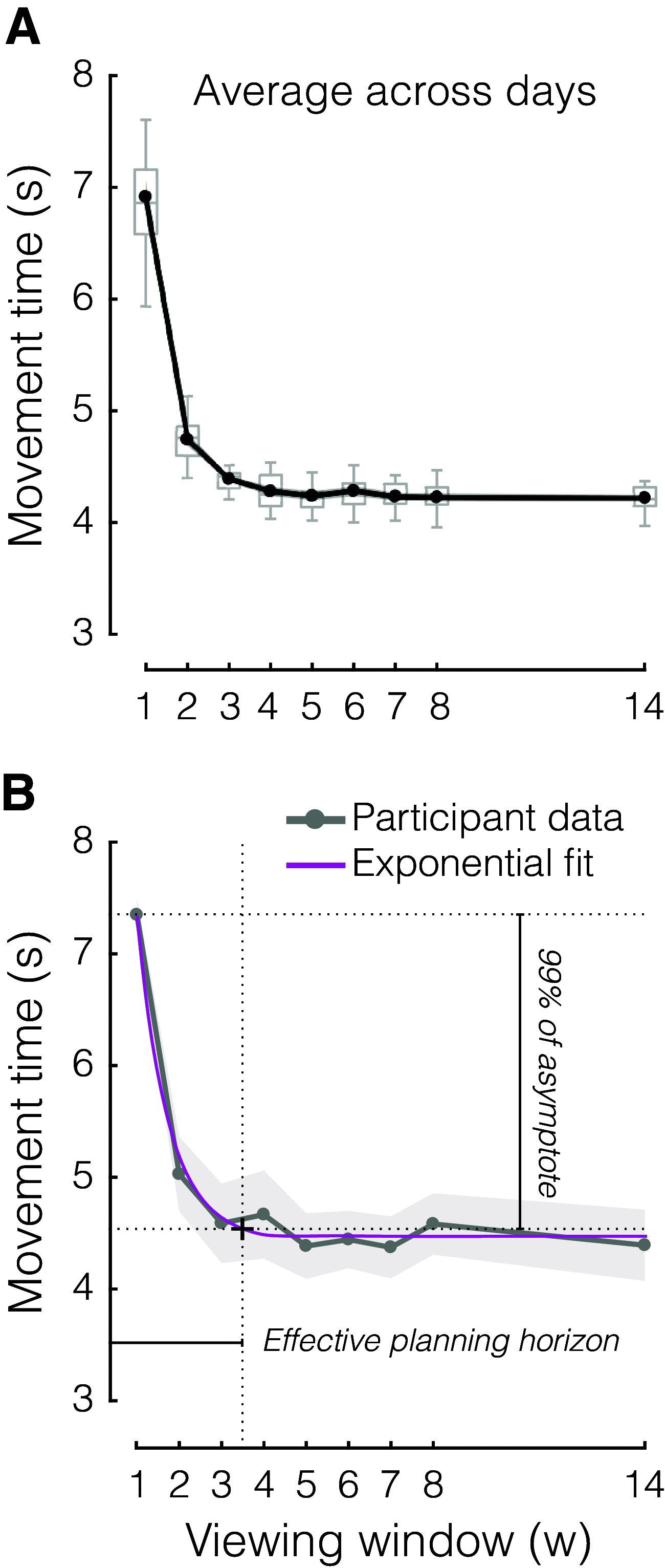The Planning Horizon for Movement Sequences
- PMID: 33753410
- PMCID: PMC8174040
- DOI: 10.1523/ENEURO.0085-21.2021
The Planning Horizon for Movement Sequences
Erratum in
-
Erratum: Ariani et al., "The Planning Horizon for Movement Sequences".eNeuro. 2023 Feb 6;10(2):ENEURO.0500-22.2022. doi: 10.1523/ENEURO.0500-22.2022. Print 2023 Feb. eNeuro. 2023. PMID: 36746633 Free PMC article. No abstract available.
Abstract
When performing a long chain of actions in rapid sequence, future movements need to be planned concurrently with ongoing action. However, how far ahead we plan, and whether this ability improves with practice, is currently unknown. Here, we designed an experiment in which healthy volunteers produced sequences of 14 finger presses quickly and accurately on a keyboard in response to numerical stimuli. On every trial, participants were only shown a fixed number of stimuli ahead of the current keypress. The size of this viewing window varied between 1 (next digit revealed with the pressing of the current key) and 14 (full view of the sequence). Participants practiced the task for 5 days, and their performance was continuously assessed on random sequences. Our results indicate that participants used the available visual information to plan multiple actions into the future, but that the planning horizon was limited: receiving information about more than three movements ahead did not result in faster sequence production. Over the course of practice, we found larger performance improvements for larger viewing windows and an expansion of the planning horizon. These findings suggest that the ability to plan future responses during ongoing movement constitutes an important aspect of skillful movement. Based on the results, we propose a framework to investigate the neuronal processes underlying simultaneous planning and execution.
Keywords: memory capacity; motor planning; practice effects; sequence production; skillful movement.
Copyright © 2021 Ariani et al.
Conflict of interest statement
The authors declare no conflicts of interest.
Figures








References
MeSH terms
LinkOut - more resources
Full Text Sources
Other Literature Sources
